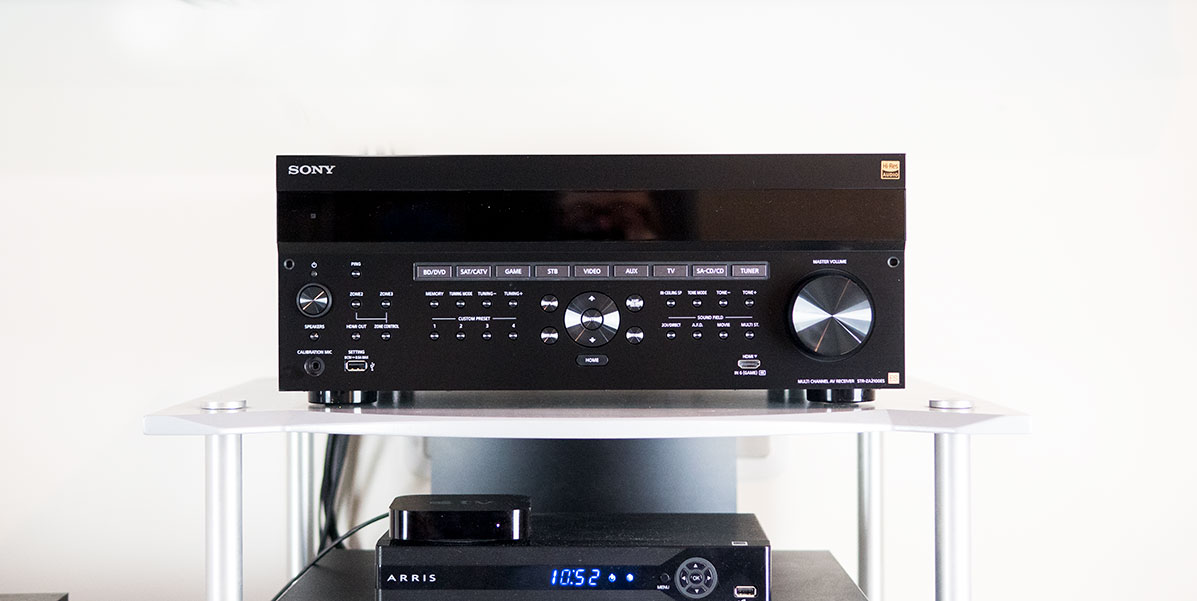
The Sony STR-ZA2100ES receiver is a proud member of Sony’s Premium ES Home Theatre line (ES stands for Elevated Standard) and is loaded with state of the art features while providing exceptional performance. These days there are a myriad of different ways to configure your home entertainment system. While I personally find it hard to imagine that anyone simply buys a TV these days and listens to their programming from the television’s built-in speakers, that is still one way of partaking. Another popular and relatively inexpensive way is with a sound bar. Much better than what the TV can provide is still falls short of what can be aurally reproduced with a receiver and multiple speaker configuration.
If you want amazing sound, ease of use, versatility, and amazing sound (did I mention the amazing sound you get from the ES receivers?) then look no further than the ES line of Sony receivers. In this blog I will discuss Sony’s Premium ES lineup, look specifically at the STR-ZA2100ES model receiver, and try to make the associated ideas of Hi-Res audio, 4K, pass-through, HDR, and Dolby Atmos among other unique terms that dot the home theatre landscape.
Overview of Sony ES Line
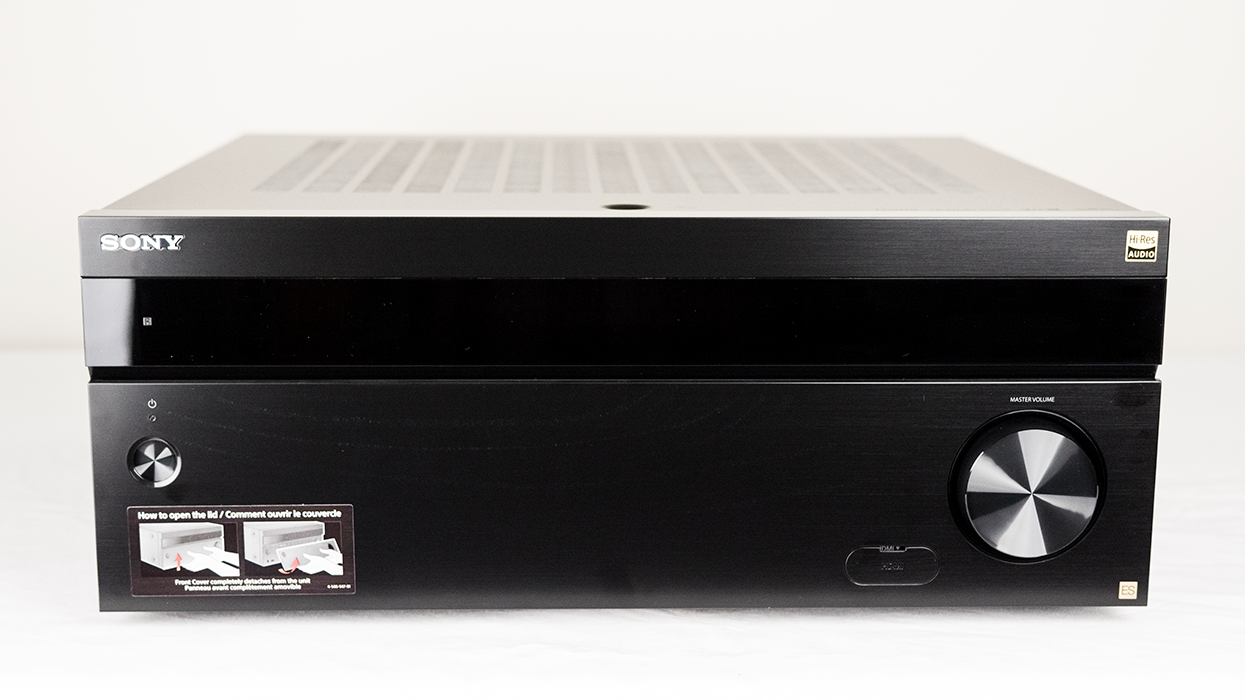 Best Buy offers Premium Sony ES receivers and projectors that simply put, rise well above your run of the mill home theatre components. Sony is so sure of the build quality in the ES line that they offer an unbelievable full 5-year parts and labour warranty. If anything fails in your unit within 5 years of purchase it will be fixed, simple as that. Long-term piece of mind to be sure.
Best Buy offers Premium Sony ES receivers and projectors that simply put, rise well above your run of the mill home theatre components. Sony is so sure of the build quality in the ES line that they offer an unbelievable full 5-year parts and labour warranty. If anything fails in your unit within 5 years of purchase it will be fixed, simple as that. Long-term piece of mind to be sure.
Dolby Atmos Surround Sound Processing
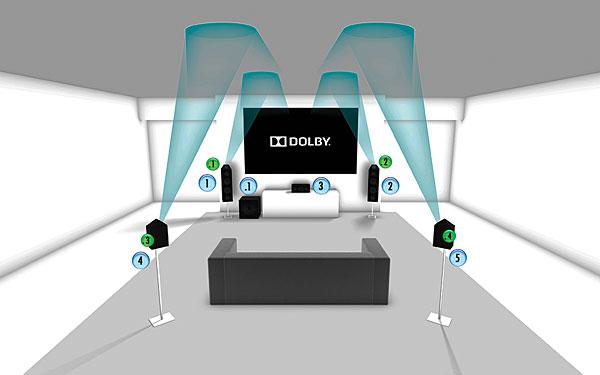 I still remember when I got my first Hi-Fi VHS player and connected it to my home stereo so I could watch movies on my 29” TV and listen to the sound play through my stereo’s two tower speakers. With the lights out and the sound cranked, I remember thinking that this is like being at the theatre to see a movie. A few years later I got a surround sound receiver so I was now playing movies through 5 speakers (1 centre channel, 2 front to the left and right, and 2 rear speakers) and a subwoofer. When the medium of choice changed to DVD it really was home theatre nirvana. There have been other updates and advances since then like Dolby Pro Logic but the move to Dolby Atmos is monumental if not potentially confusing so I will keep it as basic as possible as there are lots of places to get in-depth information if you so desire.
I still remember when I got my first Hi-Fi VHS player and connected it to my home stereo so I could watch movies on my 29” TV and listen to the sound play through my stereo’s two tower speakers. With the lights out and the sound cranked, I remember thinking that this is like being at the theatre to see a movie. A few years later I got a surround sound receiver so I was now playing movies through 5 speakers (1 centre channel, 2 front to the left and right, and 2 rear speakers) and a subwoofer. When the medium of choice changed to DVD it really was home theatre nirvana. There have been other updates and advances since then like Dolby Pro Logic but the move to Dolby Atmos is monumental if not potentially confusing so I will keep it as basic as possible as there are lots of places to get in-depth information if you so desire.
 Dolby Atmos is referred to as “object based surround”. Where Dolby digital sound allowed for each speaker to have its own unique channel of audio, Atmos lets audio move through 3-dimensional space in your room. Rather than simply moving from 1 speaker to another, the speaker configuration in addition to the encoding of the audio create a virtual soundscape that literally encompasses you. Sounds can be above or below or beside you and constantly moving. The encoded audio track is decoded in the receiver and it plays out on your speakers. Now, you do likely need more speakers for this as you can use 7, 9, or 11. The extra speakers are referred to as “height speakers” and ideally are ceiling mounted although there are other ways of achieving the effect. Essentially you need to layer the speakers and thus the sound but when you do, it is an incredible aural effect and more and more Blu-Ray movies are hitting the shelves with Atmos on board.
Dolby Atmos is referred to as “object based surround”. Where Dolby digital sound allowed for each speaker to have its own unique channel of audio, Atmos lets audio move through 3-dimensional space in your room. Rather than simply moving from 1 speaker to another, the speaker configuration in addition to the encoding of the audio create a virtual soundscape that literally encompasses you. Sounds can be above or below or beside you and constantly moving. The encoded audio track is decoded in the receiver and it plays out on your speakers. Now, you do likely need more speakers for this as you can use 7, 9, or 11. The extra speakers are referred to as “height speakers” and ideally are ceiling mounted although there are other ways of achieving the effect. Essentially you need to layer the speakers and thus the sound but when you do, it is an incredible aural effect and more and more Blu-Ray movies are hitting the shelves with Atmos on board.
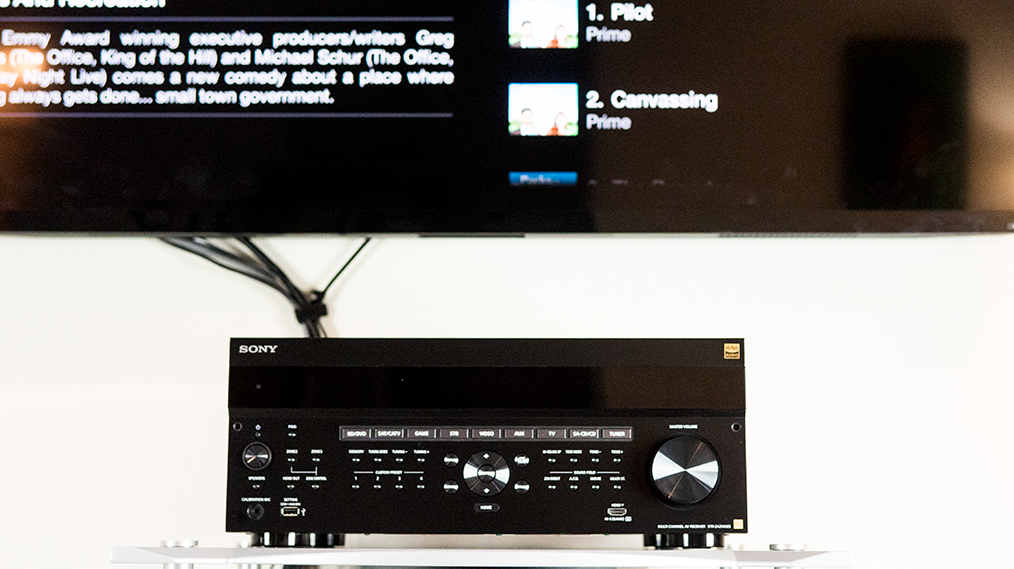 I do not personally have the speakers to take advantage of this in my review but I have had the pleasure of test driving this technology in a listening room and it is simply breath taking. My understanding as well is that the ES receivers will run 7 speakers and a subwoofer but if you were to add the extra speakers to your viewing room you would also need to add a power amp to run the added height speakers. You can of course, as I did, simply run in a typical 5.1 surround setup. One feature that the ES line offers when you do this is that it can take your 5.1 setup and through its “phantom surround” feature can virtually turn your setup into a 7.1 channel configuration. During setup you can also use the “Room Correction” feature which runs a test tone and based on your speaker locations can automatically adjust EQ to give you the best sound reproduction possible.
I do not personally have the speakers to take advantage of this in my review but I have had the pleasure of test driving this technology in a listening room and it is simply breath taking. My understanding as well is that the ES receivers will run 7 speakers and a subwoofer but if you were to add the extra speakers to your viewing room you would also need to add a power amp to run the added height speakers. You can of course, as I did, simply run in a typical 5.1 surround setup. One feature that the ES line offers when you do this is that it can take your 5.1 setup and through its “phantom surround” feature can virtually turn your setup into a 7.1 channel configuration. During setup you can also use the “Room Correction” feature which runs a test tone and based on your speaker locations can automatically adjust EQ to give you the best sound reproduction possible.
4K Audio/Hi-Res Audio
 I am not a fan of the term “4K Audio” for a couple of reasons. First of all, as detailed in this blog entry, 4K is a video specific term and does not apply to audio. That is to say that a 4K movie on a 4K TV has a resolution of 3840 pixels by 2160 lines or some reasonable facsimile. So this applies solely to the image and not to the accompanying sound. However, if you are running a 4K video signal into a receiver and out to your 4K TV you do need a receiver that is capable of passing the audio through and to the television. This is called a 4K audio pass-through but the audio itself has no relation to the 4K video signal as a term of measurement or reference to quality.
I am not a fan of the term “4K Audio” for a couple of reasons. First of all, as detailed in this blog entry, 4K is a video specific term and does not apply to audio. That is to say that a 4K movie on a 4K TV has a resolution of 3840 pixels by 2160 lines or some reasonable facsimile. So this applies solely to the image and not to the accompanying sound. However, if you are running a 4K video signal into a receiver and out to your 4K TV you do need a receiver that is capable of passing the audio through and to the television. This is called a 4K audio pass-through but the audio itself has no relation to the 4K video signal as a term of measurement or reference to quality.
 It is however Hi-Res (high resolution) audio and should be thought of, if not referred to, as such. While there is no accepted standard as to what qualifies specifically as “Hi-Res audio” it is at it’s core a lossless audio file which means it has not been compressed. For instance an mp3 file is a compressed file which makes it easier to transfer online but does have some signal lost in the compression. So Hi-Res refers to lossless audio files that are higher bit-depth than a CD which is 16bit at 44.1 kHz. Any uncompressed file larger than this could then be called hi-res although you generally see a hi-res file at 24bit and 96 or 192 kHz. The key byproduct of this, other than increased audio fidelity, is a larger file size. Not every digital audio player is capable of playing a lossless Hi-Res audio file due to how it is formatted but the Sony ES receivers can in fact decode and play this audio
It is however Hi-Res (high resolution) audio and should be thought of, if not referred to, as such. While there is no accepted standard as to what qualifies specifically as “Hi-Res audio” it is at it’s core a lossless audio file which means it has not been compressed. For instance an mp3 file is a compressed file which makes it easier to transfer online but does have some signal lost in the compression. So Hi-Res refers to lossless audio files that are higher bit-depth than a CD which is 16bit at 44.1 kHz. Any uncompressed file larger than this could then be called hi-res although you generally see a hi-res file at 24bit and 96 or 192 kHz. The key byproduct of this, other than increased audio fidelity, is a larger file size. Not every digital audio player is capable of playing a lossless Hi-Res audio file due to how it is formatted but the Sony ES receivers can in fact decode and play this audio
HDR and Upconversion
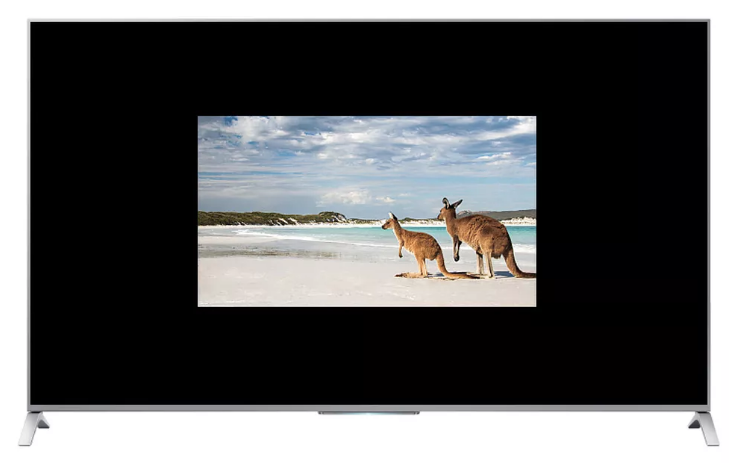
When running a video signal into your ES receiver and out to your 4K capable TV or projector, it can work a couple of different ways. A 4K signal is displayed in its native 4K quality. A Blu-ray player or a set-top cable box is likely transmitting a 1080p/1080i signal and isn’t taking advantage of the television or projector’s abilities. The Sony ES receivers will take that 1080p video signal and upscale it to 4K quality. While it is never the quality of a real 4K source video, upconversion takes the original HD signal and increases the pixel count so that it fits on the 4K screen which has many more pixels than the 1080p screen. It doesn’t make the new 4K image look any more detailed than the original per se, it mostly just enlarges and smooths it to take full advantage of the extra real estate.
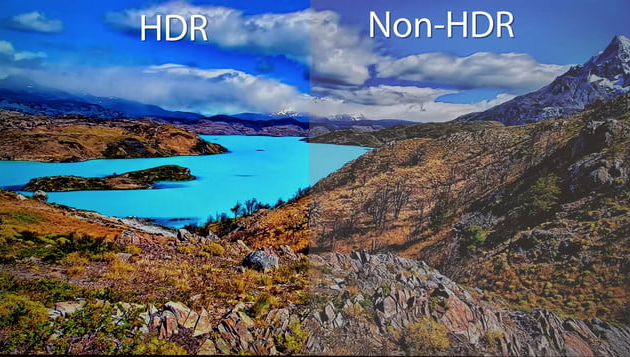 You may have also heard the term HDR bandied about recently if looking at getting a new 4K television. HDR stands for High Dynamic Range and at its core provides a greater contrast between blacks and whites resulting in bright whites, very dark blacks, and also giving colours more depth and vibrance. HDR definitely makes the colours in your video “pop” on the screen. While the step up to 4K from 1080p is impressive, you could definitely argue that the introduction of HDR is an even more visually stunning leap forward in video. Now, not all 4K TVs support HDR technology but if your TV does, rest well knowing that the Sony ES receivers have the required circuitry on board to pass an HDR signal through to the TV ensuring that you get your video image in the best possible quality.
You may have also heard the term HDR bandied about recently if looking at getting a new 4K television. HDR stands for High Dynamic Range and at its core provides a greater contrast between blacks and whites resulting in bright whites, very dark blacks, and also giving colours more depth and vibrance. HDR definitely makes the colours in your video “pop” on the screen. While the step up to 4K from 1080p is impressive, you could definitely argue that the introduction of HDR is an even more visually stunning leap forward in video. Now, not all 4K TVs support HDR technology but if your TV does, rest well knowing that the Sony ES receivers have the required circuitry on board to pass an HDR signal through to the TV ensuring that you get your video image in the best possible quality.
Sony STR-ZA2100ES Receiver
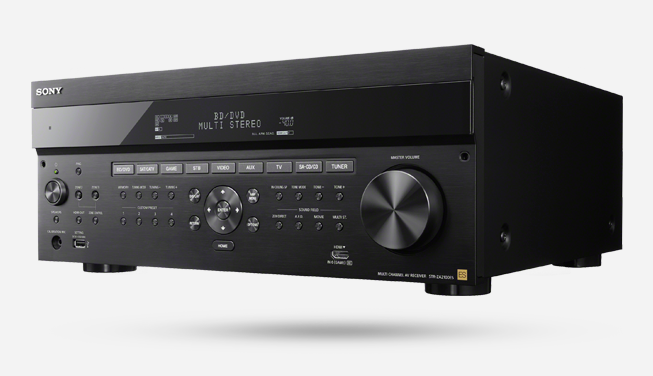
The specifics on the Sony STR-ZA2100ES include all that has been mentioned so far in regard to the Sony Elevated Standard line in general. To briefly recap that and insert a few more, though no less important gems, this receiver has out of the box 7.2 channel surround ability with the capability of Dolby Atmos and DTS:X. It also features Phantom Surround and can emaulate a 7 speaker configuration when you only have 5. There are 6 HDMI inputs and 2 outputs that pass-through 4K and HDR video signals. It will also upscale your 1080p signal to 4K, providing of course you have a 4K television or monitor.
 There are 105 watts per channel and can control 2 sets of speakers (A/B) either separate or together. You can update the firmware via the front USB but can also use the USB to save your receiver’s settings on to a flash drive. This allows you to back them up in case of some failure but will also let you transfer those settings to another unit. One of the coolest feature on the STR-ZA2100ES is Room Correction. You essentially run test tones in your listening space and based on its determinations of speaker locations, will automatically adjust EQ settings to ensure that you are getting the best quality of audio reproduction as possible.
There are 105 watts per channel and can control 2 sets of speakers (A/B) either separate or together. You can update the firmware via the front USB but can also use the USB to save your receiver’s settings on to a flash drive. This allows you to back them up in case of some failure but will also let you transfer those settings to another unit. One of the coolest feature on the STR-ZA2100ES is Room Correction. You essentially run test tones in your listening space and based on its determinations of speaker locations, will automatically adjust EQ settings to ensure that you are getting the best quality of audio reproduction as possible.
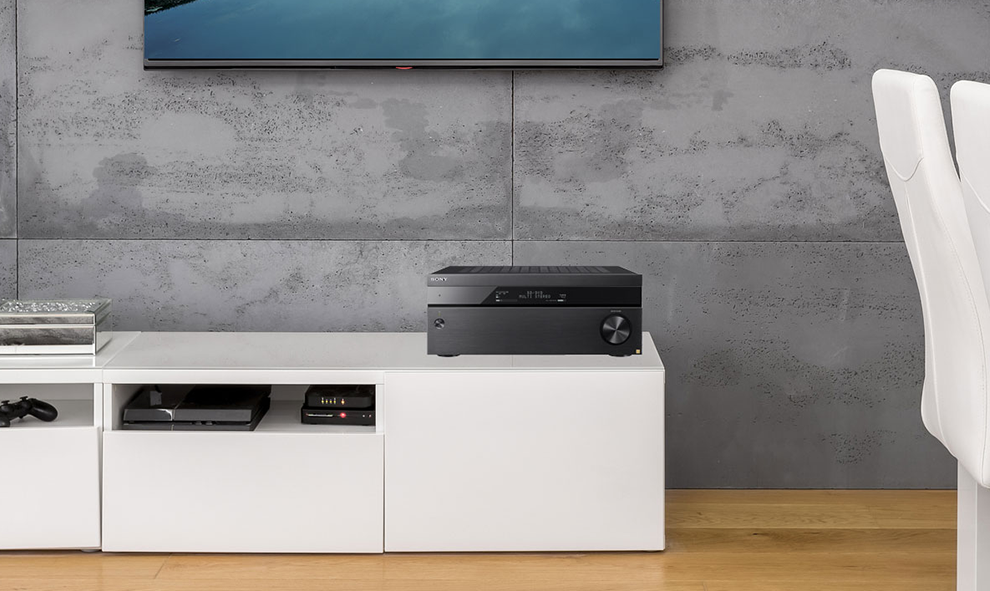
My current receiver is just over a decade old now and while it does what it has always done, as I add new components with new tech, there are major features I can not utilize. The Sony ES receivers don’t just give you amazing sound and ease of use, it future proofs you for the foreseeable future. I always know when a new package arrives for me from Best Buy that I have a couple of weeks to play with it, get to know the god and the bad, and at the end of the day it goes back to where it came from. This was the second time I did not want to ship a package back at the end (the other was for the Zoom H5 audio recorder which I ultimately did end up purchasing for myself).
For the true home theatre enthusiast who takes their movie watching seriously, the Sony STR-ZA2100ES is a no brainer. This Elevated Standard premium receiver from Sony provides stunning crystal clear music and cinema like surround. Full of features, built to the highest quality, and featuring an unheard of 5 year warranty, you can stop by your local Best Buy store and check it out for yourself. Prepare to be impressed.



